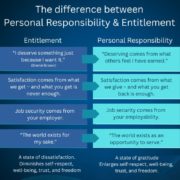Leadership When People Don’t Want To Be Led
As leaders, we impact people’s lives and it’s fulfilling when things go well. But things don’t always go well. So what do you do when someone isn’t engaged, is struggling or not showing up as you need them to?
There’s no easy answer, but here’s a few thoughts about responding to a difficult team member:
- Assess the context. Is the resistance/lack of accountability a change or is it their default behavior? A change can indicate a mental health challenge or something going on in their personal life.
- Be honest and provide an opportunity to address head-on what’s going on.
- Grant grace. Understand there’s usually more to the story and may be outside of your control. Just because you are in a position of leadership doesn’t mean you’re going to get people to act they way you’d like them to.
- Be clear. Let them know what you expect. Negotiate and define mutually agreed upon expectations. Remember: you can bring compassion to the situation without compromising your standards.
- Talk about consequences if resistance remains and expectations aren’t met. Consequences can involve motivators that might inspire change. They might eventually turn to termination, but you don’t have to start there.
- Realize that challenges are usually there to help us grow. As Eleanor Roosevelt, a woman who had a deep understanding of getting through hard times, said, “The encouraging thing is that every time you meet a situation, though you may think at the time it is an impossibility and you go through the tortures of the damned, once you have met it and lived through it you find that forever after you are freer than you ever were before.”









